Small wins and tremendous losses feels like a pretty apropos summary for 2018, both in video gaming and, you know, the world which is going to end in ~12 years. We saw record gains for women in the US's 2018 election and a slew of new releases tackling topics like gender, sexuality, racism, and neurodivergence with grace and care. There was a noted uptick in reporting on and speaking out against workplace cultures of sexism, toxicity, and crunch in a number of larger game studios. But while tonedeaf braggadocio about one's own abusive labor practices doesn't quite measure up to willfully ignoring the impending global climate catastrophe to keep the numbers going up, the increased scrutiny certainly hasn't seemed to hurt the end-of-year accolades for Red Dead Redemption II. Everyone is too busy oohing and aahing over KDA Akali (myself included) to remember how rough it is for the women who work at Riot Games.
Thankfully there is no shortage of other games worth highlighting this year, and you can expect spoilers for most of them so reader beware. Here's to the games that didn't make the cut.
Runners-up: 11. Detroit: Become Human, 12. Super Smash Bros. Ultimate, 13. Marvel's Spider-Man, 14. Heaven Will Be Mine, 15. God of War, 16. The Awesome Adventures of Captain Spirit, 17. Vampyr, 18. Into the Breach, 19. Soul Calibur VI, 20. Darksiders 3
Best Old Game
Diablo III: Eternal Collection
When the console version of Diablo III (D3) was announced... forever ago, I scoffed at it. Fire my Cluster Arrows without the split-second precision offered by a mouse? No this Demon Hunter. I was perfectly happy playing on PC, and continued to do so during my periodic check-ins with the game for expansions or to run a season during a lull between new game releases.
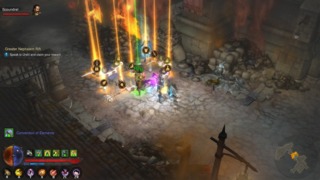
Again, I scoffed when an updated console version was released on the Nintendo Switch late this year. Then I noticed my twitter feed filling up with tweets about all the fabulous places people found themselves playing D3. I realized that D3 on Switch meant D3 at the playground; D3 at Target; D3 in the bathroom; D3 in bed. Sure, it doesn't control as well, and inventory management can take a bit of finessing, but the low commitment nature of running rifts and greater rifts makes it the perfect mobile game. Building out sets and grinding for best-in-slot items is as fun as it ever was.
I don't know how much longer Blizzard plans to support the game, but Diablo II received its final patch 16 years after its initial release. Maybe it doesn't even matter. As long as D3 is a game I can pull out in a pinch anywhere, at any time, I'll keep coming back to it, Eternally.
Runners-up:Street Fighter V, Titanfall 2
Best Surprise
The Missing: J.J. Macfield and the Island of Memories
This game really came out of nowhere, and not only because I first learned of it a week after it released.
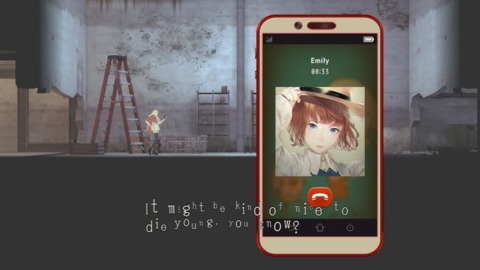
Its director, who goes by SWERY, first rose to prominence with the release of the cult hit Deadly Premonition in 2014. The game featured, among other things, a character riddled with negative queer tropes in Thomas MacLaine. The game's other prominent queer character was also the principal villain. SWERY's followup was the prematurely canceled episodic game D4: Dark Dreams Don't Die. The main character had a woman living with him who wore a one-piece bathing suit and behaved like a cat. She brought him a live rat in her mouth. The last I had heard of SWERY, he had resigned his position at Access Games to start his own studio, White Owls, where he was struggling to successfully crowdfund his next game The Good Life.
Out of nowhere comes The Missing, one of the most frank and thoughtfully written games explicitly about queer issues that I have ever played. It still has those trademark SWERY touches: the game world soaked with surrealism; the only sort-of-there gameplay that you tolerate to reach the next narrative beat; a character named "FK". But the way the game builds towards its eventual reveal, the turn, and the ways the mechanics retroactively represent the game's themes in the context of the final act make for a remarkable experience.
If you can play the game, I wholeheartedly recommend it, with a major content warning for self-harm. If not, you should read the excellent article "The Missing Gets Queer Love Stories Right" by Heather Alexandra where she talks about the game in greater detail.
Biggest Disappointment
Dragon Ball FighterZ
Lots of people love Dragon Ball FighterZ (DBFZ). That's great! For everyone with a deep nostalgia for the anime, they made a game that goes to extraordinary lengths to look as Dragon Ball as it possibly can. Competitively, the game did well at tournaments and is now headed towards its first World Tour Finals in January. There have been a number of exciting chapters in the evolving storyline, from Go1's initial dominance to HookGangGod's win at the Summit of Power to SonicFox freezing Go1 out during the EVO finals to Kazunoko's emergence as the player-to-beat and holder of 4 of the 7 Dragon Balls.
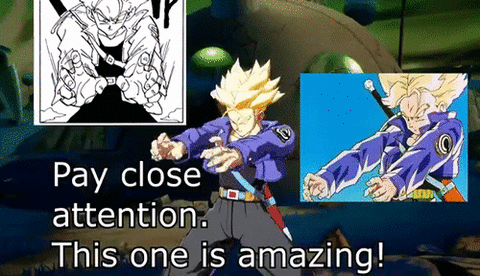
For me, someone who has no affinity for the source material, I was looking for DBFZ to be one thing and one thing only - the next great tag fighter to carry the torch after Marvel VS. Capcom Infinite showed up dead on arrival. When I think about the things I love about the Marvel VS. Capcom series, it's the room for expression and creativity. It's a wildly diverse cast of characters that allow for a wide variety of playstyles. It's going to bed after a day in the training room only to wake up at 3AM with a new idea you have to try out to see if it works. DBFZ offers me none of that.
There's a universality to the character in DBFZ that makes it much more beginner friendly as a game but lends a sameness to the way they play. Universal Ki blasts, air dashes, and Dragon Rushes makes playing neutral with most characters more or less the same. Offense with most characters is slow, staggered normals into a high/low mixup into an assist or a vanish to maintain pressure; rinse repeat. Most combos with most characters follow the same formula of grounded chain into a few air chains into an ender. Or a vanish into a snap. Even ignoring the delay-based netcode, or the fact that on release you could only occasionally get player matches if you first changed your display name before trying to queue up with your friends, there is nothing in DBFZ for me at a fundamental level. Also you can field two full teams of unique Gokus but can't have a single team made of girls which, come on.
After the Tekken 7 World Tour finals this year, several professional players expressed a reluctance to devote the same effort to the game in 2019 given the paltry prize pool. BANDAI NAMCO's financial support for the DBFZ World Tour this year is not much better. Combine that with the fact that several DBFZ tournaments this year outside of the World Tour have been forced to cancel by... someone, including a noted absence from the lineup for 2019's EVO Japan, and the future of competitive DBFZ starts looking like a big question mark. I hope they manage to pull it together for the fans, I really do, but for me I'll still sit here pining away for the eventual announcement of Marvel VS. Capcom Infinite: Uncanny Edition.
Runners-up:Far Cry 5, Shadow of the Tomb Raider
Best New Character
Connor (Detroit: Become Human)
Detroit: Become Human is a beautiful mess of a game. Just behind its jaw-dropping production values lie the words of David Cage, a thoughtless writer that actively harms people with his ignorance. Unfortunately, the game's developer Quantic Dream is one of only two studios that puts out this specific style of cinematic, choose-your-own-adventure-esque game (that I love), and the other one does horror which I just can't handle. So like always, with this latest release I did my damnedest to make lemonade, and actually found it better tasting than I expected.
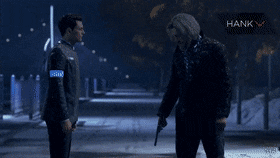
Despite being games about choice, there was never much leeway when it came to the broader characterization of the protagonists in Cage's previous works. Maybe they were a little nicer or a little meaner, a little braver or a little more cowardly in the moment, but in the end they always found their way back to the story Cage wanted to tell. Detroit is the first Quantic Dream game to have a second credited writer, and it shows particularly in Connor's tale. On its face, Connor's story runs the well trod trope of the heartless killer who learns empathy. Every pivotal decision you make ties back to that, and the game continually tries to push you in that direction through its framing and through your interactions with Hank, the burnt-out cop who plays opposite to Connor.
Connor is an android made to hunt deviant androids. Hank blames an android for the death of his son. It's certainly par for the course when it comes to nuance in a David Cage narrative, and yet, despite opportunity after opportunity to do otherwise, my Connor never faltered in his duty. Oh, Hank wanted to believe, he really did. It was hard not to, as they apprehended deviant after deviant and heard what they had to say.
"Deviant's blood may be a different color than mine, but they're alive." He was a man adrift who had finally found a purpose to cling to. That's why he was willing to bet it all and give himself over as Connor held him by his collar from the roof of a tall building.
"Moment of truth, Connor... What are you gonna do?"
I let him fall.
(Didn't shoot the lesbians tho' because fuck that trope!)
Runners-up: Luna-Terra (The World Will Be Mine), Minerva Victor (Valkyria Chronicles 4)
Best Moment or Sequence
SonicFox Accepts Best eSports Player Award (The Game Awards 2018)
Dominique McLean, or "SonicFox", first rose to prominence in the fighting game community (FGC) in 2014, winning the EVO championship in NetherRealm Studios' (NRS) Injustice: Gods Among Us at the tender age of 16 while wearing his trademark fox-ear cap adorned with blue fur. He went on to carry his hat and reputation forward, proving to be near unbeatable in NRS's next game, Mortal Kombat X, before donning his fur-suit and dominating Injustice 2.
While many people recognized his talents, there was no shortage of naysayers declaring him a big fish in a small pond. After all, his only notable accomplishments were in NRS games with their almost entirely Western audiences. He didn't have what it takes to be a contender in games like Street Fighter or Guilty Gear, games with a large Japanese scene. Japan is commonly thought of as the region-to-beat in fighting games.
So in 2016 he started to branch out, placing 7th in a pool over over 1,000 at a Capcom Pro Tour premier event for Street Fighter V (SFV) using F.A.N.G., one of the weakest characters in the game. He was eventually eliminated by Tokido, one of the strongest fighting game players in the world. In late 2017 SonicFox quickly established himself as one of the best players at Marvel VS. Capcom Infinite, using his trademark team of Jedah/Rocket Raccoon/Space Stone, before that competitive scene dried up and he moved on.
SonicFox has had an amazing 2018. He won the biggest Injustice 2 tournament of the year at the Pro Series Grand Finals. He won the biggest DBFZ tournament of the year at EVO, taking down several Japanese players including the favorite to win, Go1. And when he won the Best eSports Player Award at The Game Awards 2018, it wasn't just a win for him but a win for the entire FGC.
One thing the FGC prides itself on is its diversity. Which isn't to say that we don't have a ways to go in making the community a more welcoming, safer space for everyone, particularly female players. But we're working hard at it every day, and I can't think of another competitive gaming community where you'll see more black and brown folk mixed in with the white and yellow people, or more queer folk kicking ass and taking trophies.
Maybe he didn't think he was going to win; or more likely he figured even if he did win, he could wing it. Typical SonicFox. Still, his voice quivers, his words meanders, he somehow manages to work in a humble brag about donating $10k of his winnings to go towards his training partner's dad's cancer treatment. But SonicFox never forgets who he is, and he isn't going to let the world forget it either. "I'm gay, black, a furry... and the best eSports player in the world," and whether you like it or not, SonicFox is the FGC, and we're all better for it.
Runners-up: Let Go (Florence), Playing the Piano (Detroit: Become Human)
StarvingGamer's Top 10 Games of 2018
10. BlazBlue Cross Tag Battle
It is wild that DBFZ and BlazBlue Cross Tag Battle (CTB), two games from the same developer, Arc System Works (ArcSys), could have so many similarities on the surface yet turn out so differently in play. Both games touted their simplified control schemes, requiring players to use fewer buttons on the controller than most fighting games, relying only on basic quarter-circle directional inputs for all special moves, and giving players access to a majority of their attacks through auto-combos performed by pressing the same button multiple times in a row. If anything, these design decisions seemed like they would work out far better for DBFZ, and game being built with these restrictions in mind from the ground up, as opposed to CTB, a game pulling almost all of its cast from other, far more complex fighting games.
The opposite turned out to be true. With fewer control options given to the gameplay designers of DBFZ, there's a sort of sameness that runs through the entire cast. There are minor flavor differences in the way characters do things, but the diversity in play styles is nowhere near what is typical for an ArcSys game. Maybe that's in part owed to the intensity of their dedication to the source material, a anime where everyone's fighting form can be boiled down to punching and shooting lasers from their hands and punching some more only faster this time. Also double axe handles.
Robo-girls do it better #BBTAG#PS4sharehttps://t.co/16QjaayNmlpic.twitter.com/ZCeC9Ya49d
— The Starving Gamer (@StarvingGamer) January 4, 2019
In designing CTB, there was a clear focus in maintaining the essence of the characters in their original games. While it didn't work out for some as well as others (RIP Mai Natsume), instead of feeling reduced, characters feel distilled. Not only are the individual characters more distinct, the openness of CTB's system for tags and assists means the way a single character plays will vary greatly according to who they're teamed up with.
Which isn't to say it's all roses for me. CTB still uses ArcSys delay netcode instead of rollback which causes real problems for my already below average ability to execute in fighting games. A bulk of the game's openness for exploration is locked behind its Cross Combo system which allows players to control both characters simultaneously and is several degrees above my threshold for difficulty. But the game has characters I'm interested in playing, and unlike other tag games that I truly adore, actually has people playing it.
2018: I'll take what I can get.
9. Octopath Traveler
It still amazes me how much portability can do for my perception of a game.
If I were playing on a console at home, I would be here complaining about the baffling decisions to make a game with 8 characters that almost never interact or acknowledge each other, even when overthrowing despotic regimes or thwarting plots to turn entire populations into fuel for an immortality ritual. I would be addressing how tonally jarring it was to have a game filled with characters on typical shōnen manga journeys and also have my chosen main character begin the game as a sex worker who is told by her master that by performing oral sex on him, she might be spared the fate of her only friend who her master had just mudered before her eyes.
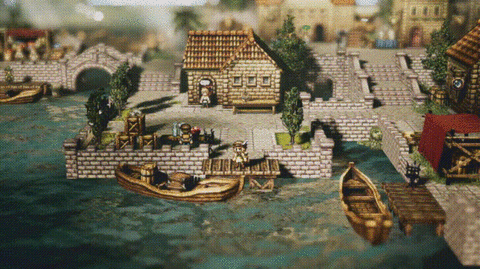
I'd be talking about the haphazard filters and visual effects plastered across every environment that didn't add much but sometimes made spaces difficult to navigate. I would describe the pixel art as largely passable but unremarkable, outside of appreciating the fact that each character was given a different set of sprites to reflect each of the game's 12 jobs and noting that some of the larger boss sprites were pleasantly expressive. I might even have an opinion about the music, had I heard any of it.
Instead I'm here gushing about an intricately designed battle/job system that kept me entertained for dozens of hours away from home. Developed by Square-Enix, Octopath Traveler's combat has a lot in common with the previously released Bravely Default games where players can reserve their actions to spend in bulk on a later turn. In the Bravely series this mostly meant looking for synergies between skills from multiple jobs that quickly devolved into finding the optimal combinations and copying them across the entire party. In Octopath, however, battles have the added wrinkle of needing to target an enemy's specific weaknesses to maximize damage dealt and minimize damage received, similar to the system found in Atlus's Persona series.
Every attack in Octopath deals damage of a specific type, and there are 12 damage types in all. The typical Octopath enemy only has 3-4 weaknesses out of those 12, which leads to lots of experimentation when entering a new area. Once you've figured out an enemy's weaknesses, every subsequent fight becomes a puzzle of how to use whichever characters and skills you have available to you at the time to defeat them as efficiently as possible. Unlike in Bravely, you cannot rest on your laurels in Octopath. Every fight in Octopath demands your attention and there's immense satisfaction to be gained from using your tools properly to ensure that all of your characters leave an encounter unscathed.
Granted, to get the true ending, you have to suffer through a grindy, time-wasting gauntlet of previous bosses that is not challenging but is time consuming, with zero opportunities to save your progress meaning that if you fail against the super difficult final boss (which is likely as you won't know its capabilities the first time you fight each its many forms), you have to go through that entire grind all over again. I may never truly "beat" the game but I still adored the time I did spend with it, and can only hope that if there's an Octopath 2 it will actually be a game with a story.
8. Celeste
Platformers are a genre I fell off of following the Super Nintendo with games I adored like Super Mario World and Donkey Kong Country. I heard some good thing about that Mario 64 game but it just wasn't for me. Later when 2D platformers started making a comeback, maybe it was just a change in tastes or maybe it was my much degraded manual and mental dexterity, I couldn't find the fun in this new breed of well tuned games focused on testing your skills.
So I was disappointed to hear that Celeste, a game praised for its refreshingly direct and nuanced take on mental health issues, was very much in the lineage of 12 precise wall-jumps into a half-gainer style of game. As much as I wanted to see the way they tackled the game's themes, I knew I wouldn't have the patience or ability to see it through. That was in January. Now come December of this year and Celeste is coming up again in conversation in everyone's discussions about their games of the year. Only now people aren't just talking about the themes or the difficulty, but about the game's refreshing approach to accessibility options.
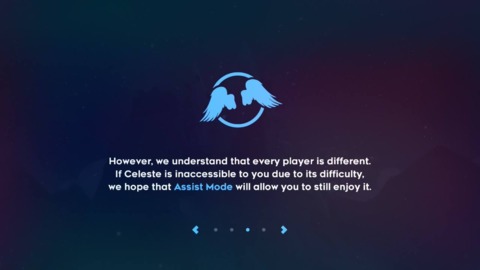
Game difficulty is still a very touchy subject that can quickly get people up in arms. Very few games offer real accessibility options, ways to tweak a game to accommodate people who have physical limitations on the sorts of tasks they can be reasonably expected to complete using a game controller. Even at a more basic level, most games haven't moved beyond labeling their variably difficulty levels with connotation-heavy words like "normal" and "easy" or, in more extreme cases, by infantilizing players who want to play on the lowest difficulty settings for whatever reason by depicting the protagonist with a pacifier and bonnet like last year's otherwise-stellar Wolfenstein II. The mere suggestion that adding ways to tweak the difficulty of a Dark Souls game might open the series up for more people is enough to throw any gaming forum or chatroom into a tizzy with people gnashing their teeth about the way the games are "meant to be played". Never mind the fact that difficulty options are... optional.
Celeste dispenses with all of that. Upon starting a new game you are immediately presented with the ability to turn on an accessibility mode. While the game developers include a message about designing the game to be played and experienced in a specific way, they also acknowledge that every player is different. So a player like me was able to push my way through the game, sometimes unmodified when my hands were cooperating, sometimes with infinite stamina or extra dashes or invincibility when my nerves were deciding to be unresponsive or when I got fed up with the hotel which is the worst area in the game. Knowing I had that safety net to fall back on freed me to try my best at the game without the constant fear that I would hit some unmanageable section and be forced to abandon Celeste completely.
It's a beautiful game with excellent music and as it turns out, it does manage to do quite well in addressing its themes. I only hope that more game developers were paying attention and realize the value in opening your game up for different sorts of people.
7. Assassin's Creed Odyssey
Full disclosure, I am nowhere close to beating Assassin's Creed Odyssey. If I had to guess I'm probably no more than 20% of the way through the main campaign. Maybe the game hits some major snags later on, although I think I would have heard about that by now if that was the case, but based on what I've played I feel confident in listing it in my top 10 over games working in a similar space like God of War and Marvel's Spider-Man. While those games may have tighter combat and more consistent production values, Odyssey provides the one thing I value most in an open-world adventure game: an actual world.
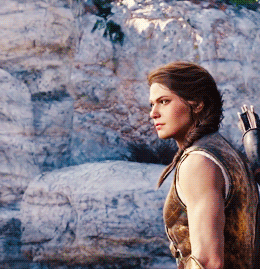
More than the fact that it's unpopulated save for a few key figures, there's a real amusement park feel to the way the environments of God of War are laid out and designed. Buildings are slightly too big as if to say, ah yes isn't this impressive, but the actual spaces they exist within are far too small, to ensure that the trip from Witch Forest Land to Big Snake Land to Dead Giant Land is never too long or arduous. Spider-Man's New York City has a similar hollowness to it. Everything is too quiet, too sterile, and there's nowhere near enough traffic to make the city actually feel lived in. If I'm going to be dealing with a blockade of mobsters in the middle of the day, my first indication should be the more incessant than usual honking of hundreds of New Yorkers caught in gridlock, not the chirping of a police scanner while web zipping across a serene city skyline.
By comparison, Odyssey's world feels massive, but also is teeming with life. Settlements and cities are bustling and the vast spaces between are filled with fauna and peppered with the occasional outpost or campsite. Unlike Kratos and Spider-Man who exist on the strata above mere mortals, Odyssey's Kassandra moves among them, and often times beneath them as a struggling mercenary. The game's exploration mode makes you feel even more like an inhabitant of the world, guiding you to unclear objectives not with a shiny waypoint but with clues that let you do the narrowing down yourself by referencing the map.
The game is also an improvement in every way over last year's Assassin's Creed Origins. The addition of several special abilities allows players to approach combat scenarios in a much more tactical fashion. The equipment system introduced in the previous game feels much more realized, with significant choices to be made throughout your journey. Bounties on your head and other mercenaries in the world mean there's always another challenging fight waiting around the corner, and the ability to choose the appearance of every piece of gear you acquire means that my Kassandra is always showing off her badass arms.
It's a race against time as I try to knock out the rest of this game before Ace Combat 7 releases in mid-January. Lucky for me my horse is a unicorn that leaves rainbow trails when it runs.
6. Magic: The Gathering Arena
I have never done the math on how much money I've spent on cardboard Magic in my lifetime, but considering that I at one point owned something around 22,000 cards, the number isn't small. Thankfully (?) a leaky pipe in an upstairs apartment slowly soaked the far corner of my bedroom closet and my collection, making it easy to abandon what was left in a cross-country move and quit the hobby entirely. In the interim I tried to dabble with a number of digital card games. Hearthstone lacked depth and embraced randomization and attacker's advantage in a way that was ultimately too off-putting for me to stick with it. SolForge was great fun but unfortunately the community never grew large enough for the game to be sustainable and it eventually died off. Shadowverse had more of what I was looking for, but the road to building a competitive deck was on the other side of more hours and dollars than I was willing to invest.
Somehow I managed to miss the announcement that Magic: The Gathering Arena (MTGA) was going to be a thing back in 2017. I continued to miss the fact that it was a thing that existed later that year all the way up until finally getting on board with the closed beta halfway through 2018. And everything came rushing back.
There still isn't a card game out there that does it quite as well as Magic. It make sense, as the game's designers have had more than 25 years to hone their craft. From the client-side, MTGA is a bit of a mess around the edges. At its core, however, the game is a flawless reproduction of the Standard format of Magic. Thanks to the reset in September to mark the start of the open beta, I was able to get in on equal footing with everyone else and start building out my collection.
The free-to-play monetization of MTGA is incredibly generous. I only put $5 into the game, more as a tip than anything else, and in a few months have managed to flesh out two competitive decks: a Jeskai control deck because I can only have fun when my opponent is miserable, and a Boros aggro deck for when I need to rack up some quick wins. I have another half-dozen-or-so moderately competent decks for funsies, and almost always have enough currency banked to enter another draft tournament whenever I want to.
I can't wait to see what 2019 has in store for this game, with the release of additional sets and the potential for the introduction of legacy formats. Unless Wizards of the Coast realizes that they've made a terrible mistake and seriously cuts into the ability to earn in-game gold, all I have to do is keep playing the game and having fun and I can keep building out decks that would have cost me hundreds of dollars to put together if I was still collecting physical cards.
5. The Missing: J.J. Macfield and the Island of Memories
There isn't much else I have to share about this game that isn't a spoiler, other than to say that if you find yourself struggling with the game at first because it does not play great, try to push through. I promise you it will prove worth it in the end. And make the effort to find all the donuts.
4. Florence
On the surface, Florence is a pretty typical short story about falling in and out of love. It's like a romantic drama but indie because you don't get that toothpaste-commercial ending. As a game, however, Florence is one of the most intelligently designed examples of storytelling through game mechanics that I have ever had the privilege to play.
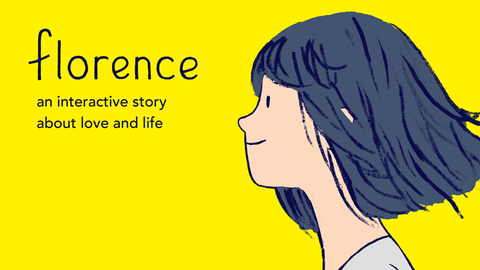
You experience the majority of the game through the point of view of the titular character, Florence, as she tries to navigate her life amidst a budding romance. There is almost no dialogue, with the majority of the plot being delivered through interactive comic-book-panel illustrations against the backdrop of stirring string music.
Early in the game, during her first date with her love interest Krish, the player as Florence has to make conversation by piecing together puzzles in the shape of speech bubbles. The puzzles aren't overly complex, being about 8-pieces in size, but there is careful thought and concentration that goes into completing each one before Florence is able to formulate a reply. As their relationship grows, so too does the ease with which they can speak with one another. 8-piece puzzles become 4, then 2, and when Krish asks to kiss you for the first time there's no puzzle at all. Just one singular piece to slot into place and say "yes".
This is just one of numerous examples of the ways Florence brings you into to its story, not just to observe it but to live it, deeply and truly. The story may not be telling anything new, but it tells it in a way unlike any other. It's available on iOS and Android, and all it asks is for 30 minutes of your time. Go get it!
3. BattleTech
So much of who I am today can be traced back to playdates at the home of my best friend all throughout elementary school. Activities included playing soldiers in the backyard ("I shot you!" "No you missed!"), watching intense action movies on VHS at far too young an age (5 is too young to be watching "Commando" right?), and playing the "Aliens" board game and, more importantly, BattleTech.
I loved playing BattleTech. I wasn't good at very many things as a kid, a deficiency that continues to this day. I wasn't very coordinated, my eyes still can't track objects moving towards me, I was very slow to develop socially, I didn't have any artistic talent really, but boy was I tactical. I could plan out my moves to maximize my evasion and always be at optimal firing ranges and manage my heat and focus fire like nobody's business. And when the simple play of the game wasn't enough, I borrowed rulebooks and started building out my own custom mechs to bring into our weekly skirmishes. At one point I even tried to homebrew my own weapon designs to make an approximation of the titular mech from "Gunbuster" (which I was also too young for) that was hilariously overpowered but my friend's dad humored me all the same.
Eventually my friend and I went to form new social circles and I stopped playing BattleTech. Still, I would continue to purchase rulebooks whenever I found them at used book stores and regularly worked on min/maxing new mech concepts when I was supposed to be listening in class. Every time a new BattleTech video game would come out, although they called they were called Mechwarrior now, I would look to them hopefully only to be disappointed that they always fell between simple action games and severely limited tactical experiences that bared little resemblance to the game I had grown up with. Sure they could put a Hunchback on screen but they couldn't capture the thrill of rolling a 12 on that Autocannon 20 shot.
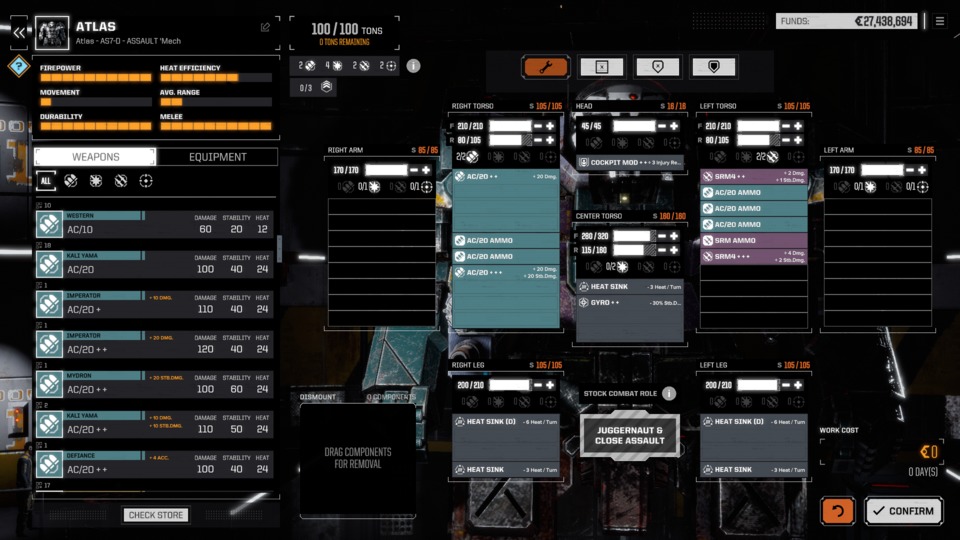
Until now! At long last, someone has made a proper tactical BattleTech video game!
By setting the game during the technological regression at the tail end of the Succession Wars, the developers at Harebrained Schemes brought me right back to childhood playing with tech level 1 mechs. The video game's rules may not map one-to-one with the original tabletop game, but only in ways that add additional nuance beyond what you can achieve by rolling six-sided dice. Though the game is lacking in production values, the narrative work is strong, and Harebrained has continued to make improvements under the hood including balance tweaks and engine optimization (menus don't take forever to navigate any more!), and they even released a full-blown expansion that fills the game world with meaningful reasons to keep exploring beyond of the main narrative.
There are just a few tastes of tech level 2 equipment that the game doles out over its story, making me hope that the game was successful enough to warrant a full sequel focused on the Clan Invasion. But as a first showing, I honestly couldn't be happier with the way the game turned out. Also the game lets you have a pilot with non-binary pronouns! More devs please do this!
2. Valkyria Chronicles 4
What's that you say? Another year, another immaculately designed JRPG that can't seem to shake free from gross and outdated anime tropes?
Valkyria Chronicles 4 is a remarkable game from top to bottom. It is the ultimate realization of the narrative ambitions of the original game alongside the gameplay advancements of the sequels, now freed from the technological limitations of the handheld consoles they appeared on. Smart additions to the tactical layer, including enemy pillboxes and a friendly APC unit, force players to explore multiple strategies instead of relying on the "scout rush" method that dominated the previous games. Every squad member is given space to breathe in the storytelling and develop as people both in relation to their squadmates and the situation around them. The game even features a genderqueer character whose queerness is never called to attention or made into a joke. Instead of being a gender nonconforming person who also happens to be a soldier, they are a badass pacifist who signed up anyways because sometimes you have to kill fascists and fight racism oh and also they happen to be genderqueer.
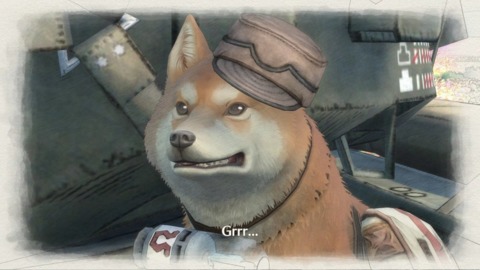
Then there's Raz, the toxic masculinity bro theoretically with a heart of gold who, fairly early in the game, firmly gropes the butt of one of your female squad mates and doesn't let go until she decks him. It's supposed to be played for laughs, clearly, as she starts beating the snot out of him in front of the rest of the squad. The commotion leads to an accidental upskirt by the male romantic lead who then receives a furious stomping from the female romantic lead. Laughs all around.
Except it isn't funny. Which isn't to say you can't do this sort of upsetting unfunny scene, if you at least have it mean something for the characters. The game isn't interested in that, though. It's just looking for a little titillation with some tropey fanservice that is immediately forgotten like a whisper in the wind. It does nothing for the plot because the plot never acknowledges it happening. You could delete the scene entirely and nothing would change. All it accomplishes is the normalization of sexual violence against women, and it even romanticizes it, as Raz and his victim Kai later profess their love for one another shortly before Raz heroically sacrifices himself to ensure the safety of the rest of the squad.
Kai is very upset as she plaintively wails his name over and over again into the radio.
The rest of the game is great though... woo 2018?
1. Monster Hunter: World
626 hours. That's about 26 days. That's also about how much Monster Hunter: World (MHW) I played (or left the game idling) in 2018.
My friend first exposed me to the series with Monster Hunter Freedom on the PlayStation Portable back in 2006. He was already a fan of the PlayStation 2 game and saw this as an opportunity to get me on board so he could have a hunting partner. He let me play the game for a bit but it didn't click with me, not yet. Like most people on their first brush with Monster Hunter, I wasn't ready to let go of my preconceived notions of how a game "should" play. I wasn't ready to meet the game on its own terms.
Which makes me wonder why I decided to give the series another shot when Monster Hunter Freedom 2 released in 2007. Knowing me at the time I probably read a really compelling preview of the game from someone I trusted in games media. More than my friend because I was an asshole. Or maybe it was just having the nature of the game articulated to me in a way that my friend never did. In either case, I approached the game with an open heart and an open mind and was immediately hooked. By the end of my run with Freedom 2 and its expansion, Monster Hunter Freedom Unite, I had logged something around 2500 hours played.
I only got 1 twisted horn... :'( #MHWorldhttps://t.co/NSqvINeYNgpic.twitter.com/AlrqBGr45W
— The Starving Gamer (@StarvingGamer) March 28, 2018
There's something about the rhythm of playing a Monster Hunter game that is unlike anything else: a satisfying busyness to preparing for a hunt; making sure you are bringing the right weapons and items; ;eating a solid meal before you venture out; all these simple-to-complete tasks building your anticipation. You enter the hunting grounds and stalk your prey. You've been in this swamp so many times you know it like the back of your hand, and you know the spots your quarry likes to frequent. You find the monster, you fight it, you chase it limping away to its lair, staying far enough out of sight so it feels safe enough to fall asleep. Then you sneak up and put a whole bunch of bombs on its head and blow it to hell and carve up its still-warm corpse for useful bits like scales and claws and bones.
You tell yourself just one more hunt and start your preparations again.
At least that's how I felt until late 2009 when I finally parted ways with the game having thoroughly plumed its depths. I would still check in with every new release: a couple hundred hours here, a couple hundred hours there; but nowhere near the level of dedication I had reached with Freedom 2. The small changes that Monster Hunter Generations brought to the series to give players more options and make fights more active managed to rekindle some of that passion, but mostly it was video game comfort food, something familiar that I knew I liked and could go through the motions with and have a good time.
That's what I thought I wanted out of MHW when it was first announced. A bigger, shinier plate to help me stomach the year that 2018 would end up being, on the back of the year that 2017 was. So I couldn't help but raise an eyebrow at some of the changes I was seeing. You can move while drinking a potion? Hunting grounds are large contiguous areas instead of a series of small rooms separated by loading screens? Instead of needing to accumulate ten points in an armor skill to activate it, all you need is a single point? There are grappling hooks? That's not my Monster Hunter.
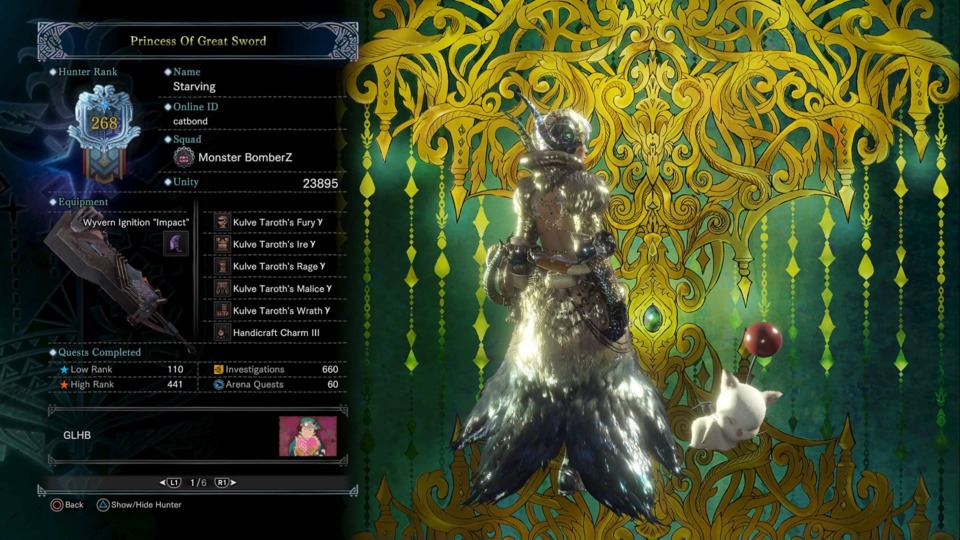
Which is fine, as it turns out. Because by not being my Monster Hunter, MHW was able to become everyone's Monster Hunter. It turns out the developers over at Capcom knew exactly what they were doing, bringing in new and lapsed players in droves and rekindling the passion of series stalwarts like me. The monsters are meticulously detailed and move with such lifelike animations that their rage and pain are palpable. Ecologies feel alive as the monsters react not just to the player but to the other creatures around them. Every weapon type has received several new actions to grant players more opportunities for decision making in combat. The revamped skill system helps players feel immediate improvement and also encourages variation and experimentation in armor combinations unlike the previous games.
There are some minor quibbles to be had. You wouldn't expect so many hurdles to joining a guild or playing a story mission with your friends in a 2018 game. The fact that skill decorations are now randomized drops makes it significantly harder to work towards specific builds. Even in all my hours played I have yet to acquire a single Release Jewel. Also the load times are excruciatingly long on the PlayStation 4.
Still, these are minor blips in what I can wholeheartedly say is one of the greatest games I have ever played. My plan for 2019 is to continue to check in with MHW, as Capcom is still releasing special event quests for the game as free content. And with the Iceborne expansion releases this Fall, I'm sure I will be all-in on MHW until 2020 and beyond.
Princess of Great Sword #MHWorldhttps://t.co/NSqvIMXnoGpic.twitter.com/ImLVfsQ3dx
— The Starving Gamer (@StarvingGamer) January 4, 2019
If you've made it this far all I can say is thanks for sticking with me. We made it another year and maybe more things will get better than get worse in 2019. As always, be sure to check out our GiantBomb Fighting Game Community Discord server. Let's hope SFV doesn't implode and keep our fingers crossed for that MvCI:UE announcement. Any day now.
Yep.
And don't forget to ... partyhard
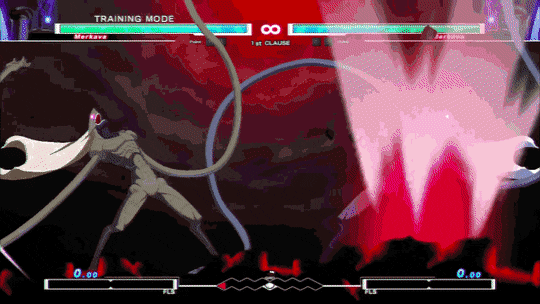
Log in to comment